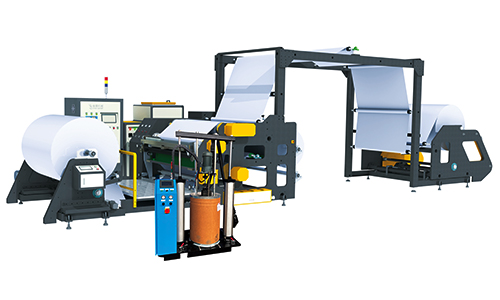
From the perspective of adhesive development technology and market application trends, reducing the environmental impact of products has become an overarching direction. The key challenge facing the adhesive industry is how to develop environmentally friendly adhesives that meet performance requirements while remaining cost-effective.
Comparing the advantages of two major types of eco-friendly adhesives: Water-based PU adhesives have garnered attention due to their process conditions and bonding performance being similar to solvent-based PU adhesives. However, they face issues such as immature application process control and high costs. PUR, on the other hand, is widely used in textile processing, primarily for fabric lamination (fabric-to-fabric and film-to-fabric), due to its excellent bonding strength and physical properties... among other functions. Its processing involves no solvents, requires no drying step, offers high production speeds, and uses less adhesive, meeting the lamination needs of various functional textiles.
PUR Hot Melt Adhesive is a bonding agent, one of the most commonly used adhesives in textile processing, especially in high-quality imitation clothing. It is extensively used for bonding non-woven fabrics, carpet seams, fabric linings, zippers, etc. Hot melt adhesives used in the textile industry must possess good bond strength, excellent softness, and resistance to washing/dry cleaning.
Furthermore, as fabrics often undergo steam treatment during setting processes, the adhesive is required to withstand high-temperature steam, with a softening point higher than 115°C, and possess appropriate crystallinity to enhance thermal stability. For instance, when polyamide is used as the base material, its lower limit content is 45% (by mass fraction). For fiber fabrics with excellent softness, hot melt adhesives are required to have lower processing viscosity.
Advancements in technology and changes in lifestyles have led consumers to demand more functionality from clothing. Beyond fashionable appearance and texture, garments must also provide comfort and functionality for various outdoor activities, such as windproof, waterproof, moisture-permeable, and breathable properties. These features rely on the combination of new materials and processes to impart various performances to fabrics. PUR can laminate various fabrics (water-repellent fabric, polyester fabric, nylon fabric, etc.) with functional films (TPU film, PU film, etc.), enabling the application of functional materials in textiles while incorporating fashionable aesthetic design, thereby enhancing product added value. Particularly with the recent rise in sportswear and leisure activities, functional apparel is no longer limited to professional sports wear but has become part of casual life, gradually emerging as another business opportunity in the textile market.
PUR Hot Melt Adhesive for Fabric Bonding
It can significantly reduce the labor intensity in garment manufacturing through bonding and sewing, producing high-quality imitation garments that fit well and are durable. Hot melt adhesives used for fabric bonding primarily include polyamide, polyphenol, and polyurethane.
PUR Hot Melt Adhesive for Lining Processing
Fusible interlining is produced by uniformly applying hot melt adhesive on the fabric surface. In use, the interlining is cut into the desired shape and size, and the side coated with PUR hot melt adhesive is thermally bonded to the reverse side of other fabric materials. It is arranged within the layers of high-quality imitation clothing, acting as the garment's skeleton, simplifying the handling and time required for garment production, resulting in lightweight, aesthetically pleasing, comfortable garments that retain their shape, are washable, and durable. Lining processing typically requires the hot melt adhesive to be colorless, odorless, soft, fast-drying, and resistant to moisture, without affecting the fabric and being light-resistant.
Various hot melt adhesives can be used for interlining processing. Almost all types of hot melt adhesives can be employed. The most commonly used are ethylene-vinyl acetate (EVA) hot melt adhesive, polyamide hot melt adhesive, and high-pressure polyethylene (HDPE) hot melt powder. The specific hot melt adhesives and processing methods differ for different applications.
PUR Hot Melt Adhesive for Carpet Bonding
The types mainly used for PUR hot melt adhesive in carpets are copolymers of ethylene and other olefinic monomers, such as ethylene-vinyl acetate copolymers, ethylene-acrylate copolymers, etc. In most cases, ethylene-vinyl acetate copolymer (EVA) is used.
Characteristics of PUR Hot Melt Adhesive in Textile Eco-Lamination:
First, textile fabrics laminated with PUR hot melt adhesive using TPU film, PTFE film, or PU film exhibit excellent waterproof and moisture-permeable (breathable) properties, offering comfort and softness. They integrate functions such as waterproofing, moisture permeation, breathability, windproofing, warmth retention, antibacterial properties, dryness, and durability. They are widely used in various fields including sports, military/police, aerospace, medical, and firefighting for items like sportswear, jackets, windbreakers, cold-weather clothing, ski wear, military/police uniforms, and isolation gowns.
Second, materials laminated using this method have an excellent hand feel. Application areas of PUR hot melt adhesive eco-lamination include: Automotive industry: headliners and cushions, door pillars; Leather lamination apparel industry: women's bras, cold-weather clothing, sportswear, wetsuit lamination; Footwear industry: sports shoe upper lamination; Healthcare: protective clothing lamination, medical surgical gowns, medical pillow covers, etc.
Third, characteristics of fabrics laminated with PUR hot melt adhesive: Can be machine washed at 40°C, 60°C, and 90°C; Resistant to alkaline washing; Dry cleanable (resistant to chlorinated solvents and bleach); Can be sterilized in a high-temperature autoclave at 134°C for 18 minutes; Can withstand high temperatures up to 200°C.
Fourth, Fully environmentally friendly: This lamination process uses reactive polyurethane hot melt adhesive, which is a completely eco-friendly adhesive. Therefore, the entire lamination process is fully environmentally friendly.
Why Choose PUR Hot Melt Adhesive for Textile Lamination?
First, we need to start by understanding PUR hot melt adhesive. PUR (Polyurethane Reactive), fully known in Chinese as moisture-curing reactive polyurethane hot melt adhesive. Its main component is isocyanate-terminated polyurethane prepolymer. PUR's bonding strength and toughness (elasticity) are adjustable, and it offers excellent bond strength, temperature resistance, chemical corrosion resistance, and aging resistance. It has become one of the important varieties in the adhesive industry in recent years.
In textile lamination, reactive hot melt adhesives are designed to inhibit chemical reaction initially. For example, they become fluid upon melting for easy application; after the two substrates are joined and cooled, the adhesive layer solidifies to provide initial bonding. Subsequently, leveraging moisture present in the air and on the substrate surfaces, it reacts and undergoes chain extension, generating high molecular weight polymers with strong cohesive force. This significantly enhances the bond strength, heat resistance, and low-temperature resistance. Due to its high reactivity, it demonstrates excellent adhesion to a variety of materials and can withstand high temperatures, water, acids, and alkalis.
 HOT LINE: 086-577-65159218
HOT LINE: 086-577-65159218












